
Complete Chapter-Wise Word Count and Argument Structure for UK Master’s Dissertation Students
Why This Guide?
12000 words dissertation structure UK (2025 Edition) : Every morning, our inbox is flooded with student queries. While most are general requests, recently we noticed a sharp rise in a specific concern: “How do I structure my 12,000-word dissertation?” and “How do I construct an argument across chapters?” These questions didn’t come from just one student, but many. That’s why we’ve prepared this comprehensive guide—to help UK students understand the ideal dissertation structure and learn how to build a strong, coherent argument throughout.
Disclaimer
📝 Pro Tip: Always refer to your university’s dissertation guidelines (like those from the University of Wolverhampton) to adjust this breakdown accordingly.
📊 Dissertation Structure: Word Count Breakdown (12,000 Words)
| Chapter | Percentage | Word Count | Purpose |
|---|---|---|---|
| Introduction | 10% | 1,200 words | Introduce the topic, background, scope, objectives, and thesis statement |
| Literature Review | 30% | 3,600 words | Review existing research, identify gaps, and set theoretical foundation |
| Methodology | 15% | 1,800 words | Explain research design, data collection, analysis, and justify approach |
| Results/Findings | 5% | 600 words | Present key data findings without interpretation |
| Discussion | 30% | 3,600 words | Analyse and interpret findings, relate to objectives and literature |
| Conclusion & Recommendations | 10% | 1,200 words | Summarise findings, restate purpose, recommend future research |
💡 Tip: Bookmark this table. Refer back to it as you write so you never lose track of where your word count should go.
🎓 Introduction | Word Count & Argument Guide for a 12,000 Words Dissertation (UK Students)
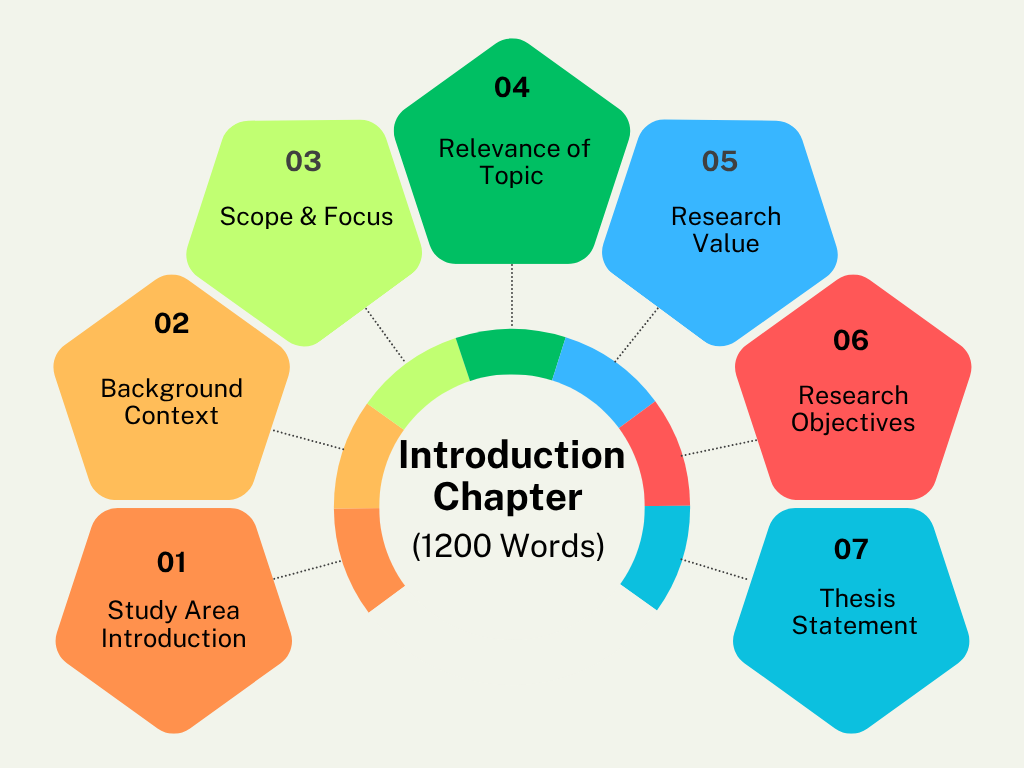
Many UK students either undervalue the introduction or overcompensate by stuffing too much into it. At Projectsdeal, we’ve seen both mistakes ruin the flow of excellent dissertations. The truth? The introduction isn’t the whole story — it’s the trailer. Make it compelling, make it clear, and keep it within limits.
👉 For a 12,000-word dissertation, the introduction should be precisely 10%, which equals 1,200 words.
🎁 Bonus Insight: What to Cover in the Introduction Chapter?
We often get questions like, “What do I include in the introduction?” Even when we don’t — we’re giving it to you anyway. Why? Because that’s what makes Projectsdeal the UK’s Most Trusted Dissertation Writing Service.
Let’s dive into it 👇
🧠 How to Write the Introduction Chapter Argumentatively
Writing the introduction isn’t just ticking boxes — it’s building an academic argument from the very first sentence. Think of it like football: if you play smart, you win. But if you misplace your passes (read: lose your argument flow), you’ll be chasing the game from chapter two.
Follow this structured format to build your argument logically and impressively.
📝 Introduction Chapter Structure for a 12,000 Words Dissertation
| 🧩 Section | 🎯 What to Include |
|---|---|
| 1. Study Area Introduction | Start by introducing the main topic. What are you exploring and why is it worth attention? |
| 2. Background Context | Offer historical or theoretical background. Help readers understand the what, when, and why. |
| 3. Scope & Focus | Define the boundaries of your research. Make it clear what is included — and what is not. |
| 4. Relevance of Topic | Explain how your dissertation connects with broader academic debates, trends, or real-world problems. |
| 5. Research Value | Clearly state the academic or practical value your study adds. If it’s not adding value, why pursue it? |
| 6. Research Objectives | List the specific aims your research sets out to achieve. Make them clear, measurable, and achievable. |
| 7. Thesis Statement | End with a concise, arguable thesis. This is the anchor of your entire dissertation. |
⚠️ Common Mistakes to Avoid
- ❌ Writing the introduction before finalising the body chapters
- ❌ Using generic or vague thesis statements
- ❌ Overloading it with literature (save that for the Literature Review)
- ❌ Skipping the research value or objectives
✅ Final Advice from Projectsdeal Experts
“Your introduction is a handshake with your examiner. Make it confident, structured, and worth remembering.”
If you follow this breakdown and stay focused on argument development, your introduction chapter will do more than introduce — it will impress. And if you ever get stuck, Projectsdeal is here to help you win this academic match.
📚 Literature Review | Word Count & Argument Guide for a 12,000 Words Dissertation (UK Students)
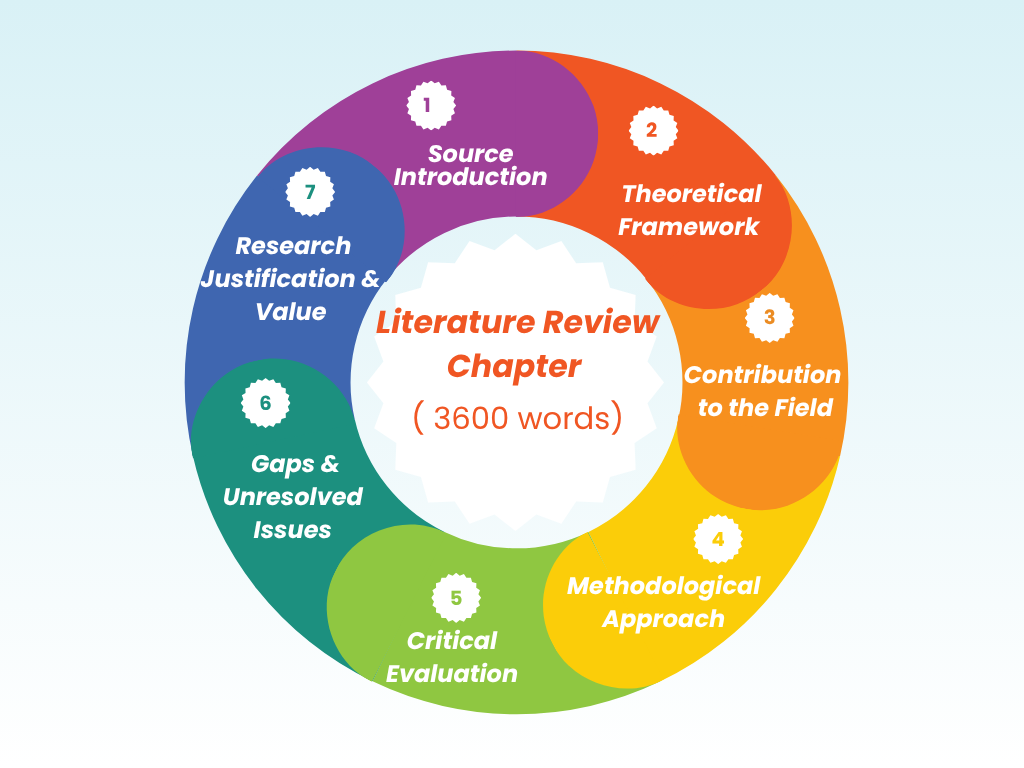
Ever wondered, “How long should the literature review be in a 12,000-word dissertation?” Let’s clear that up right away.
💡 According to Projectsdeal Dissertation Experts, your Literature Review should be 30% of the total dissertation length — that’s 3,600 words. This chapter is not just filler; it’s the academic backbone of your study.
Sadly, many students either underestimate it or struggle with what to include. We’re here to fix that once and for all.
📖 What Is the Purpose of a Literature Review in a Dissertation?
The Literature Review is the first technical chapter and arguably one of the most crucial. It sets the research foundation, builds your argument base, and shows examiners that you’ve done your homework — thoroughly.
The quality of your research depends on the quality of your sources. That’s where it all begins.
🧠 How to Write the Literature Review Chapter Argumentatively
To write a Literature Review that’s not just descriptive, but analytical and argumentative, follow this structure:
📝 Literature Review Chapter Structure for a 12,000 Words Dissertation
| 🧩 Section | 🎯 What to Include |
|---|---|
| 1. Source Introduction | Begin by introducing the academic sources used. Explain why you selected them and establish their credibility. |
| 2. Theoretical Framework | Highlight key theories, models, and concepts relevant to your study. Define major themes and perspectives. |
| 3. Contribution to the Field | Discuss how each source adds value to the field. What has already been discovered? What gaps remain? |
| 4. Methodological Approach | Clarify how you conducted your literature review — scoping, narrative, or systematic. Choose wisely based on your topic’s scope. |
| 5. Critical Evaluation | Instead of summarising, critically analyse the strengths and limitations of existing studies. |
| 6. Gaps & Unresolved Issues | Clearly state what’s missing in the current research and why that matters. |
| 7. Research Justification & Value | Conclude by explaining how your own dissertation will fill the gaps and contribute to the academic conversation. |
🚫 Common Mistakes to Avoid in the Literature Review
- ❌ Simply summarising articles without critique
- ❌ Choosing outdated or non-peer-reviewed sources
- ❌ Ignoring theoretical relevance
- ❌ Failing to connect the review to your research aims
✅ Projectsdeal Pro Tip:
“Don’t treat your Literature Review like a list. It’s not a bibliography. It’s an argument in disguise, showing where your research fits and why it matters.”
🤝 What If You’re Not Confident?
If you feel overwhelmed trying to balance academic writing, source evaluation, and structure — you’re not alone. Literature Reviews are among the most demanding chapters.
Whether you’re unsure about which sources to use, how to identify research gaps, or how to format your argument — Projectsdeal can help.
We offer expert academic writing assistance for UK students, especially when it comes to dissertations that meet university standards.
✅ Need Help With Your Literature Review Chapter?
🎯 Place your order now at Projectsdeal.co.uk — the UK’s most trusted dissertation writing service.
📞 WhatsApp us at +44-7447-882377 — get fast support, expert feedback, and deadline-friendly delivery.
💬 Join thousands of students who’ve achieved success with Projectsdeal.
📌 Final Words from Projectsdeal Experts
Mastering the Literature Review means laying a solid intellectual foundation for your dissertation. It’s the launchpad for your Methodology, Discussion, and everything that follows.
With a well-structured, critically written, and purpose-driven Literature Review, you’ll not only pass — you’ll impress.
Need help polishing or writing yours from scratch? Projectsdeal is UK’s No.1 Dissertation Writing Service for a reason — we help you get it right the first time.
🔬 Research Methodology | Word Count & Argument Guide for a 12,000 Words Dissertation (UK Students)

How long should the methodology section be in a dissertation?
👉 For a 12,000-word dissertation, Projectsdeal Dissertation Experts recommend dedicating 15% of the total word count, which equals 1,800 words, to the Research Methodology chapter.
This section isn’t just a formality — it’s where your academic reputation as a credible researcher is built. It tells the examiner, “I know what I’m doing — and here’s how I did it.”
🧭 Why the Research Methodology Matters
The methodology chapter is more than just explaining how data was gathered. It’s about defending your approach with coherence, logic, and relevance.
Imagine this: If your examiner questions your methods, your entire dissertation could lose credibility — even if the rest is flawless.
This is exactly why Projectsdeal supports students in writing a methodologically sound dissertation — one that’s robust, justified, and backed by academic reasoning.
🧠 How to Write the Research Methodology Chapter Argumentatively
To write an argument-driven methodology chapter, structure your content logically and ensure every decision you make is backed by academic justification.
📝 Research Methodology Chapter Structure for a 12,000-Word Dissertation
| 🧩 Section | 🎯 What to Include |
|---|---|
| 1. Research Design | Define whether your study uses a Qualitative, Quantitative, or Mixed Methods approach. Explain why. |
| 2. Methodological Justification | Show how your chosen method aligns with your research questions, objectives, and discipline standards. |
| 3. Data Collection Strategy | Describe how data was gathered — interviews, surveys, case studies, experiments — and explain why that was the best route. |
| 4. Sampling & Analysis | Who did you study and how? Justify your sample size, population, sampling technique, and data analysis tools. |
| 5. Validity, Reliability & Ethics | Discuss how you ensured credibility, maintained integrity, reduced bias, and followed ethical protocols. |
📌 Example Argument Flow
“Since the study aimed to explore subjective perceptions among first-year nursing students, a qualitative approach using semi-structured interviews was most appropriate. This method allowed for deep insight and theme emergence, aligning with Braun & Clarke’s (2006) thematic analysis principles.”
✅ Projectsdeal Pro Tip:
“Justification is everything. Don’t just describe — argue why your choices make sense academically.”
⚠️ Mistakes to Avoid in the Methodology Section
- ❌ Choosing a method you can’t justify
- ❌ Skipping ethical considerations
- ❌ Being vague about tools and procedures
- ❌ Using methods misaligned with your research questions
🤝 What If You’re Not Confident?
If you’re worried your methodology might fall flat, you’re not alone. Many students struggle to connect methods with objectives — and that’s okay.
Whether it’s ergophobia (fear of complex academic tasks) or lack of clarity, Projectsdeal offers professional dissertation writing help for UK students who want to get it right the first time.
With expert academic writers who understand both research design and university expectations, we help you build a bulletproof methodology chapter that examiners trust.
✅ Need Help With Your Methodology Chapter?
🎯 Place your order now at Projectsdeal.co.uk and let UK’s most trusted academic writing service take care of your dissertation structure.
📞 WhatsApp us directly at +44-7447-882377 — fast support, expert advice, and timely delivery guaranteed!
🎓 Final Words from Projectsdeal Experts
The Research Methodology chapter isn’t just where you say what you did — it’s where you justify how you did it and prove it was the best choice.
A compelling, well-defended methodology can raise your entire dissertation grade.
Need help getting started? Projectsdeal is here for UK students who want first-class dissertations with zero stress and full academic integrity.
📊 Results/Findings | Word Count & Argument Guide for a 12,000-Word Dissertation (UK Students)
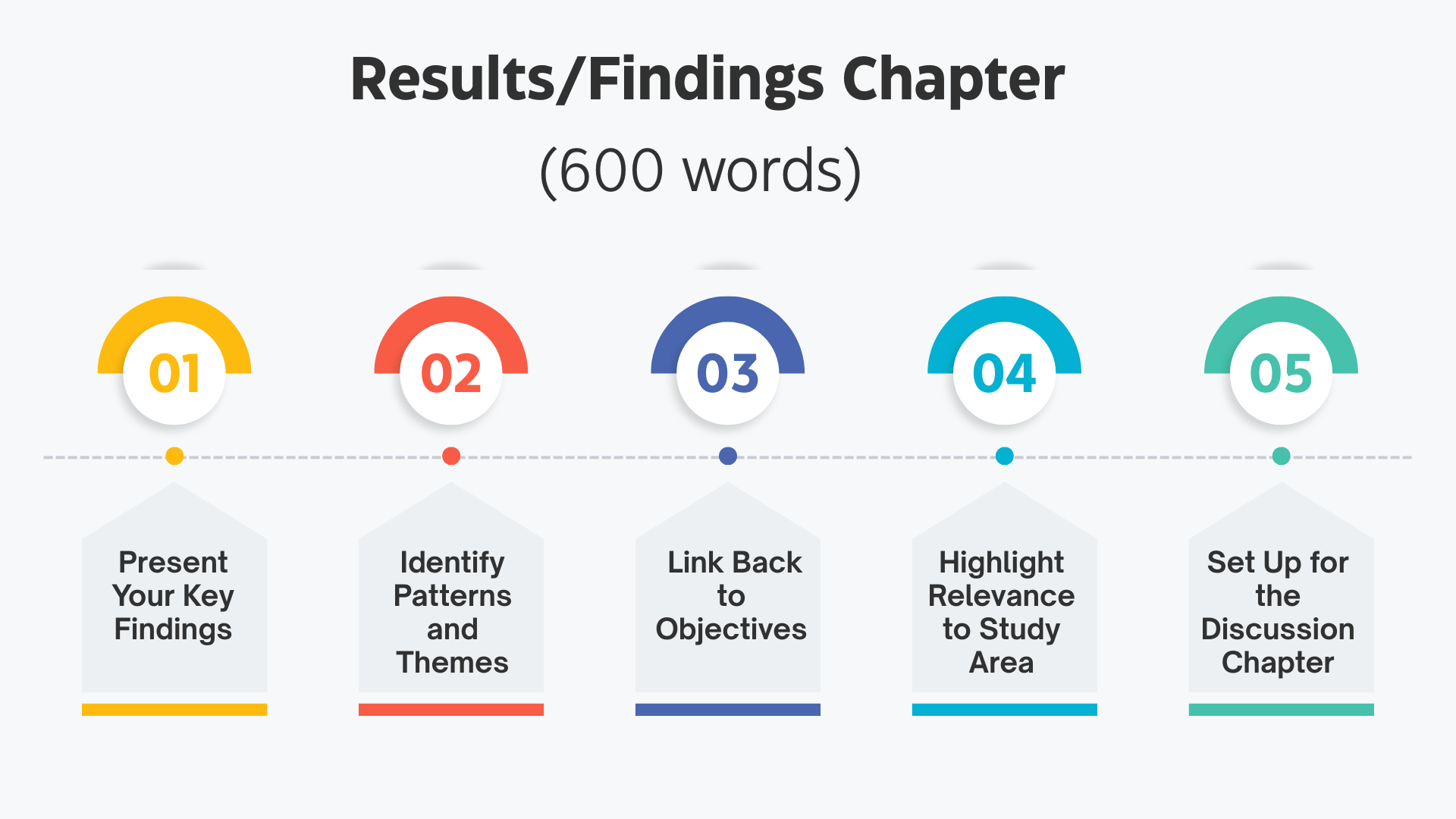
When writing your dissertation, it’s easy to pour all your energy into the research process — and then forget the actual results deserve just as much clarity.
While the Results or Findings chapter carries only 5% of your total word count (600 words), don’t let the number mislead you — its impact is significant.
At Projectsdeal, we often say: “The methodology shows your effort, but the results show your success.” Without clearly demonstrating the outcomes of your research, your dissertation risks falling flat, regardless of how hard you worked.
🎯 Importance of the Results/Findings Chapter
This chapter is not for interpretation — that comes in the Discussion. Here, your task is simple yet critical: present your raw findings clearly, accurately, and objectively.
📌 How to Write the Results Chapter Argumentatively
Since you only have around 600 words, your writing must be sharp, concise, and well-structured. Every sentence should carry weight.
Here’s a step-by-step guide to presenting your findings with coherence and relevance:
📝 Structure of the Results Chapter in a 12,000-Word Dissertation
| 📌 Step | 🧠 What to Include |
|---|---|
| 1. Present Your Key Findings | Share what your data shows. Stick to facts — don’t explain them here. Use charts, tables, or bullet points if needed. |
| 2. Identify Patterns and Themes | Spot similarities, trends, and patterns in the data. This helps organise your results logically. |
| 3. Link Back to Objectives | Show how these results align with the research aims/objectives stated in your Introduction. |
| 4. Highlight Relevance to Study Area | Briefly relate the results to the broader research area or background context. |
| 5. Set Up for the Discussion Chapter | Add subtle cues that lead naturally into your Discussion section, where you’ll analyse the results. |
📌 Example Argument Flow
“The thematic analysis revealed two dominant patterns: student anxiety before assessment periods and their reliance on peer-based emotional support. These findings directly align with Objective 2, which aimed to explore coping mechanisms used by first-year psychology students.”
🚀 Projectsdeal Tips for the Results Chapter
- ✅ Be objective — describe, don’t analyse
- ✅ Use visuals (figures/tables) for clarity and to save words
- ✅ Stick to what the data says, not what you think it means
- ✅ Keep it tight — 600 words isn’t much, but it’s enough when done right
🧠 Why This Chapter Still Matters (Even at Just 5%)
Even though it’s short, the Results chapter holds your research’s credibility together. Your findings are the evidence that justifies all your earlier work. If they’re vague, scattered, or incomplete, it weakens the impact of your entire dissertation.
And let’s face it — this is where the examiner wants to see proof.
⚠️ Common Mistakes to Avoid
- ❌ Over-interpreting the data (save that for the Discussion chapter)
- ❌ Adding your opinion or analysis here
- ❌ Ignoring negative or unexpected results
- ❌ Using vague or unclear visual aids
Keep it straightforward, evidence-based, and aligned with your research goals.
📈 Final Thought from Projectsdeal
Your Results chapter may be short, but it’s powerful. Done well, it strengthens your academic credibility and sets the foundation for your Discussion.
Want it done professionally, perfectly, and stress-free?
👉 Projectsdeal is the UK’s most trusted dissertation service for a reason. Let our experts help you get it right — the first time.
💬 Discussion | Word Count & Argument of a 12,000-Word Dissertation (Projectsdeal UK Guide)
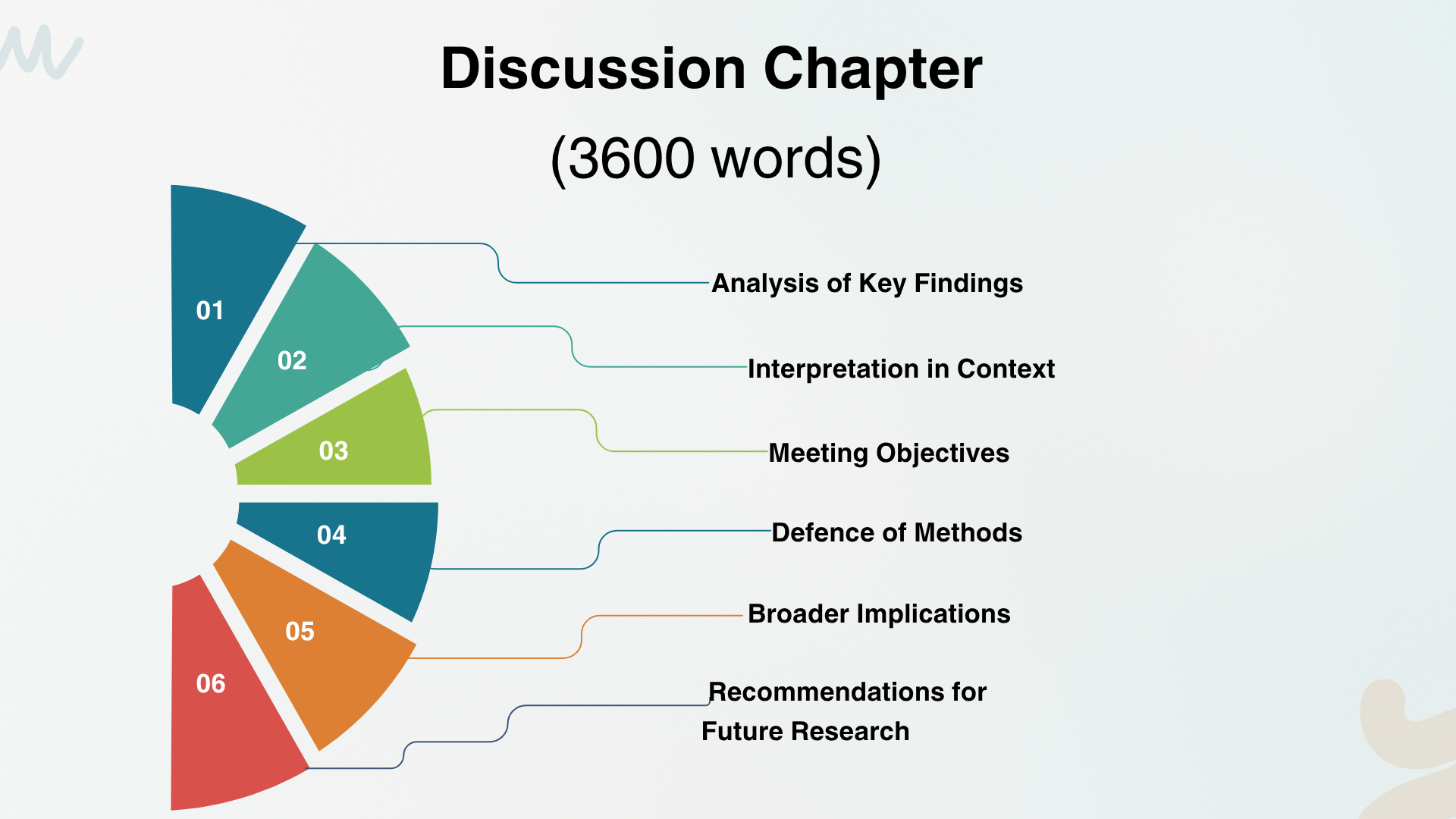
Let’s be honest — the Discussion chapter is where everything comes together. It’s not just a section; it’s your academic voice, speaking directly to your examiner. Think of it like catching up with a close friend about something serious — only, this time, you’re academically decoding the “what, why, and how” of your research.
In a 12,000-word dissertation, the discussion chapter typically takes 30% of the word count, which equals 3,600 words. It’s your chance to defend your findings, show critical thinking, and explain the bigger picture. Done well, this section turns your research from informative to impactful.
🎯 Why Is the Discussion Chapter So Important?
At Projectsdeal, we always remind students that the Discussion chapter is where grades are won or lost. You’ve done the hard work — now’s the time to explain what it all means.
Your examiner will expect you to:
- Analyse what your findings reveal
- Show how your data answers the research question
- Link everything back to the literature
- Explain the broader implications
- Recommend future research avenues
Let’s break it down step by step.
🧠 How to Write the Discussion Chapter Argumentatively
Use an evidence-based argument style while keeping the tone formal and structured. Here’s how:
📌 Structure of a 3600-Word Dissertation Discussion Chapter
| 📌 Section | 🧠 What to Include |
|---|---|
| 1. Analysis of Key Findings | Break down your major findings and what they reveal about your research problem. |
| 2. Interpretation in Context | Explain how your results relate to the literature you reviewed. Confirm or challenge past research. |
| 3. Meeting Objectives | Demonstrate how each research objective has been addressed. Tie back to the introduction. |
| 4. Defence of Methods | Justify the methods used. Show why they were suitable, and respond to any limitations. |
| 5. Broader Implications | Discuss the relevance of your findings in the wider field and real-world applications. |
| 6. Recommendations for Future Research | Suggest areas where additional investigation is needed. This shows academic maturity. |
🧪 Example Argument Flow
“The data indicates a strong correlation between remote working flexibility and job satisfaction among UK tech employees. This finding supports the conclusions of Carter (2021), but contradicts earlier studies by Finch (2018), suggesting a shift in work culture post-pandemic. Objective 3, which aimed to evaluate remote work outcomes, has thus been effectively addressed.”
⚠️ Projectsdeal Tips to Ace the Discussion Chapter
- ✅ Avoid repeating raw results — focus on what they mean
- ✅ Keep tying back to research objectives and literature
- ✅ Stay critical: acknowledge limitations, but show confidence
- ✅ Use transitional phrases to maintain coherence in your argument
- ✅ Structure the chapter clearly — don’t ramble
📥 What NOT to Do in the Discussion Chapter
- ❌ Don’t include irrelevant results — stick to your research scope
- ❌ Don’t analyse data that wasn’t in the Results chapter
- ❌ Don’t introduce new references unless absolutely necessary
- ❌ Don’t avoid criticism — embrace and address it
💡 Have extra findings you want to share? Move them to the appendices section and refer to them appropriately.
🎓 Final Words from Projectsdeal
The Discussion chapter is where your research becomes meaningful. It’s not about numbers — it’s about insight. If you can show your examiner that you understand what your research means and why it matters, you’re already on your way to academic excellence.
And if you’re unsure where to start?
👉 Let Projectsdeal UK’s #1 Dissertation Writing Service craft it for you — with confidence, clarity, and academic precision.
✅ Conclusion | Word Count & Argument of a 12,000-Word Dissertation (Projectsdeal UK Guide)
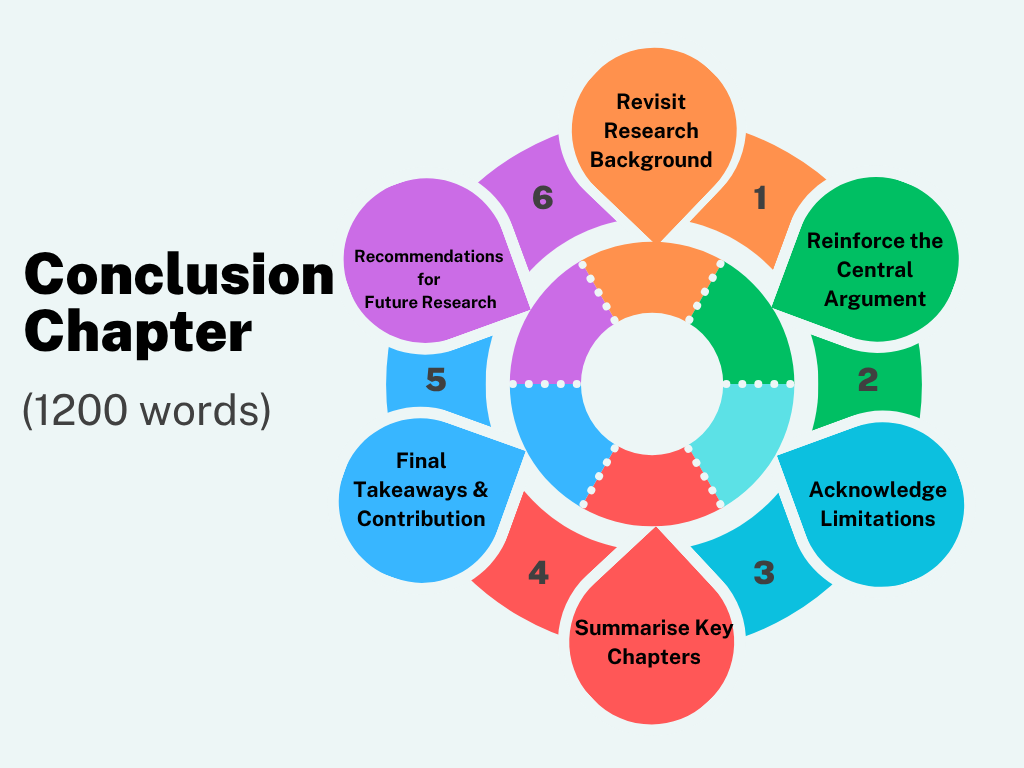
We’ve come to the final stretch of your academic marathon — the Conclusion and Recommendations chapter. It may be the last, but it’s by no means the least. This chapter accounts for 10% of your dissertation word count, which equals 1,200 words in a standard 12,000-word dissertation.
It’s your chance to summarise your research, reflect on your academic journey, and leave your examiner with a lasting impression. As always, Projectsdeal is here to show you how to do it right.
🎯 Why Is the Conclusion Chapter So Important?
In academic writing, the conclusion isn’t just a sign-off — it’s your final opportunity to convince the examiner of the value of your research. It ties everything together and demonstrates that you’ve fulfilled your objectives.
With 1,200 words, you’ll need to write concisely, clearly, and argumentatively — without rehashing your entire dissertation. The goal? To summarise with impact.
🧠 How to Write the Conclusion Chapter Argumentatively
To maintain argument coherence in this final chapter, you must reconnect with your research purpose while avoiding unnecessary repetition. Here’s how to structure your thoughts:
📌 Structure of a 1200-Word Dissertation Conclusion Chapter
| Section | What to Include |
|---|---|
| 1. Revisit Research Background | Briefly restate the research problem, gaps in literature, and the motivation behind the study. |
| 2. Reinforce the Central Argument | Restate your thesis and how your findings support it. Highlight key insights. |
| 3. Acknowledge Limitations | Point out any shortcomings in your methodology or scope without undermining your work. |
| 4. Summarise Key Chapters | Recap major takeaways from literature review, methodology, results, and discussion. |
| 5. Final Takeaways & Contribution | Reflect on the main message you want readers to retain — your research value. |
| 6. Recommendations for Future Research | Suggest what future researchers can explore further based on your findings. |
✍️ Sample Conclusion Argument Style
“This dissertation aimed to assess the impact of ethical leadership on employee performance in UK SMEs. The findings demonstrate a significant correlation between leadership transparency and staff engagement, thereby addressing the primary research objective. While the limited sample size remains a constraint, the research opens valuable avenues for organisational behaviour studies in post-pandemic environments.”
🚫 Mistakes to Avoid in the Conclusion Chapter
- ❌ Don’t introduce new literature or data
- ❌ Don’t copy-paste sentences from earlier chapters
- ❌ Don’t oversell — stay honest and academic
- ❌ Don’t skip limitations — acknowledging them adds credibility
📢 Pro Tip from Projectsdeal Experts
“A strong conclusion shows maturity, academic depth, and reflective thinking. It proves that you didn’t just ‘write to submit’ — you understood the academic journey.”
🎓 Final Words from Projectsdeal
The Conclusion chapter may be short, but it’s powerful. It’s your closing argument in the courtroom of academia. If you do it right, you’ll leave your examiner nodding in approval — and that’s half the battle won.
💡 Still worried about hitting the right tone? Let Projectsdeal’s expert academic writers craft a powerful, persuasive, and plagiarism-free dissertation for you.
👉 Trusted by UK students since 2001.
👉 100% Confidential. 100% Guaranteed Results.
👉 Ranked #1 Dissertation Writing Service in UK.
📄 Other Essential Pages to Structure Your 12,000 Words Dissertation
At Projectsdeal, we’ve already walked you through crafting the core chapters of a 12,000-word dissertation — from the introduction to the conclusion. But wait — your dissertation isn’t complete yet! To meet university standards in the UK and impress your supervisor, you also need to structure the supporting pages correctly.
These additional pages may not hold large word counts, but they are crucial to the academic presentation and professional polish of your dissertation.
Let’s explore these often-overlooked pages that complete your dissertation and give it the finishing touch.
📌 Must-Have Dissertation Pages (Beyond the Main Chapters)
| Page | Purpose |
|---|---|
| Title Page | Displays the dissertation title, your name, university, department, and submission date. This is the first impression of your work. |
| Table of Contents | Provides an organised view of chapters, subheadings, and page numbers for easy navigation. |
| Acknowledgement Page | A space to express gratitude to those who supported your research journey — supervisors, advisors, peers (but not professional dissertation services). |
| Abstract | A concise summary (150–300 words) of your entire dissertation: objectives, methodology, results, and conclusion. |
| References Page | A properly formatted list of all sources cited throughout your dissertation. Use Harvard, APA, MLA, or the style your university requires. |
| Appendices | A section to include supplementary material: raw data, charts, interview transcripts, or irrelevant findings that still add context. |
📘 Title Page: Set the Academic Tone
This is the first page your examiner will see. Ensure it includes:
- Full dissertation title
- Your full name
- University name and department
- Programme title
- Supervisor’s name
- Submission date
✅ Pro Tip from Projectsdeal: Keep it clean, formal, and aligned with your university’s formatting guide.
🙏 Acknowledgement Page: Say Thanks (Tactfully)
Use this page to thank:
- Your academic supervisor
- Any faculty or peers who gave you insights or feedback
- Family or friends who supported you emotionally
❌ Avoid thanking paid dissertation services or ghostwriters — this could raise ethical concerns.
📚 References: Credit Where It’s Due
Your References or Bibliography section is non-negotiable. Include every source you cited in your text using the appropriate citation style.
“Plagiarism or poor referencing can undermine your entire dissertation — let Projectsdeal UK experts help you cite correctly and avoid accidental errors.”
📎 Appendices: Store the Extra Details
Use the appendices to include:
- Interview questionnaires
- Raw survey data
- Charts or graphs too detailed for the main text
- Irrelevant but interesting findings
- Ethics approval forms
Just make sure you reference each appendix properly within the main chapters!
📊 Word Count Structure Breakdown – University of Wolverhampton Dissertation Guide
If you’re pursuing your postgraduate degree at the University of Wolverhampton, one of the most important factors in successfully completing your dissertation is adhering to the recommended word count structure. At Projectsdeal, we ensure your dissertation meets academic standards, both in quality and structure — because a well-balanced dissertation is more likely to impress your supervisor and pass without revisions.
Before you begin writing your 12,000-word dissertation, it’s essential to plan how those words should be distributed across each chapter. Here’s the official breakdown, as per the University of Wolverhampton dissertation guidelines.
🎓 University of Wolverhampton Dissertation Word Count Structure (12,000 Words)
| Chapter | Recommended Percentage | Word Count |
|---|---|---|
| Introduction | 10% | 1,200 words |
| Literature Review | 20% | 2,400 words |
| Research Methodology | 30% | 3,600 words |
| Results/Findings | 10% | 1,200 words |
| Discussions | 20% | 2,400 words |
| Conclusion & Recommendations | 10% | 1,200 words |
📚 Frequently Asked Questions – 12,000 Word Dissertation Guide (2025 Edition)
❓ How many pages should a 12,000-word dissertation be?
A 12,000-word dissertation typically ranges between 48 to 60 pages, depending on several factors:
- Formatting style (APA, MLA, Harvard, etc.)
- Font type & size (usually Times New Roman, 12 pt)
- Spacing (double-spaced is most common)
- Inclusion of visuals (charts, tables, graphs)
👉 At Projectsdeal, we ensure your dissertation layout is perfectly formatted according to your university’s guidelines, delivering a clean, professional appearance that matches academic standards.
❓ How many references for a 12,000-word dissertation?
There’s no fixed number, but a 12,000-word dissertation typically includes 50 to 120 references, depending on your:
- Research depth
- Subject area
- Number of sources reviewed in the literature review
📌 Tip: Quality matters more than quantity. Prioritise credible, peer-reviewed sources like journals, books, and government publications. Our experts at Projectsdeal help ensure every citation adds genuine value to your research.
❓ How long does it take to write a 10,000-word dissertation?
Writing a 10,000-word dissertation can take anywhere from 2 to 6 weeks, depending on:
- Your research preparedness
- Writing speed
- Editing and referencing time
💡 Many students underestimate the time needed for proofreading and formatting. If you’re short on time or confidence, Projectsdeal offers tailored dissertation writing services to ensure you meet your deadlines stress-free.
❓ Is it possible to write 12,000 words in a day?
Technically, yes, but realistically — not advisable. While you could type 12,000 words in 10–15 hours under extreme pressure, you’ll likely compromise on:
- Quality of research
- Clarity of argument
- Referencing accuracy
- Academic tone and structure
❓ What percentage of a dissertation should the literature review be?
For a 12,000-word dissertation, the literature review should usually make up around 30% of the total word count, which equals approximately 3,600 words.
🔍 This chapter:
- Reviews key academic sources
- Identifies gaps in existing research
- Establishes the theoretical foundation for your study
📘 Pro Tip: A strong literature review is critical for scoring high marks, as it shows your understanding of the academic context.
💡 Projectsdeal’s academic writers build literature reviews that are both analytical and argument-driven — not just summaries.
❓ How long should a conclusion be for a 12,000-word dissertation?
Your conclusion should be around 8% to 10% of your total word count — roughly 1,000 to 1,200 words for a 12,000-word dissertation.
✍️ A strong conclusion should:
- Summarise the key findings
- Revisit your research objectives/questions
- Present recommendations or future research directions
- Reflect on the value and limitations of your study
❓ How long should a methodology be in a 12,000-word dissertation?
For a 12,000-word dissertation, the methodology chapter should typically be 20% to 25% of your total word count — that’s around 2,400 to 3,000 words.
🧪 This chapter explains how you conducted your research, covering:
- Your research design (qualitative, quantitative, or mixed methods)
- Data collection methods (interviews, surveys, case studies, etc.)
- Sampling techniques
- Ethical considerations
- Limitations and scope
📌 Tip: A clear and detailed methodology boosts your dissertation’s credibility. It shows the examiner your approach was both rigorous and replicable.
❓ What is the methodology of dissertation research?
The methodology of a dissertation refers to the systematic approach you use to answer your research questions or test hypotheses. It includes:
- The philosophy guiding your research (e.g., positivism, interpretivism)
- The type of research (exploratory, descriptive, explanatory)
- Your research strategy (e.g., case study, ethnography, survey)
- Tools and techniques used for data gathering and analysis
💬 Think of it as the blueprint of your research — it justifies why you used certain methods and how they align with your objectives.
❓ How do you write a research methodology for research?
Writing a methodology chapter involves clearly explaining the what, why, and how of your research process. Follow this structure:
- Introduction
Briefly outline the chapter and its purpose. - Research Design
State whether you used qualitative, quantitative, or mixed methods. - Philosophical Approach
Mention your research paradigm (e.g., positivism, constructivism). - Data Collection Methods
Explain how you collected data (e.g., interviews, experiments, surveys). - Sampling Strategy
Describe your population/sample and how you selected participants. - Data Analysis Techniques
Explain how you analysed your data (e.g., thematic analysis, SPSS). - Ethical Considerations
Discuss consent, confidentiality, and university ethics compliance. - Limitations
Acknowledge any constraints that may affect your research validity.
🧠 Pro Tip from Projectsdeal:
“Examiners don’t just want to know what you did — they want to know why you did it that way and how it ensures academic reliability.”
⚠️ Writing a dissertation is not just about hitting a word count — it’s about developing a well-researched, logically structured, and academically sound document. If you’re in a tight spot, let Projectsdeal’s UK-based experts craft a high-quality dissertation that meets all requirements.
📝 Final Thoughts on the 12,000 Words Dissertation Structure (UK Students – 2025 Edition)
The structure of a 12,000-word dissertation for UK students in 2025 follows academic traditions, but expectations have evolved. Universities now demand more than just descriptive content—they expect critical analysis, research originality, and methodological precision. A clear, well-thought-out structure is the foundation of all these elements.
Whether you’re pursuing an undergraduate or postgraduate degree, structuring your dissertation the right way can set you apart. From the Introduction to the Conclusion, every chapter must be interconnected, aligned with your objectives, and presented logically.
By breaking down your 12,000-word dissertation into manageable sections with dedicated word counts and purposes, you can approach each chapter with confidence and clarity. Remember: a strong structure leads to strong content.
✅ Need Help with Your 12,000-Word Dissertation?
Struggling to put it all together? Projectsdeal.co.uk is here to help. We are the UK’s most trusted dissertation writing service, offering expert academic support aligned with your university’s marking criteria and deadlines.
🔒 Trusted by thousands of UK students
🏆 Featured on Yahoo Finance(Check Now)
🎓 100% confidential academic writing service
👉 Place your order now at Projectsdeal.co.uk and let our experts take it from here.